List Of Foods High In Fiber Plus Must Try Recipes
As a Mom to little ones I know the importance of eating foods high in fiber. I want my kids eating as many fruits and veggies as possible but sometimes that’s easier said than done. This post is written to help you understand why fiber is so important for our health and how to actually add in foods high in fiber to recipes for your family.
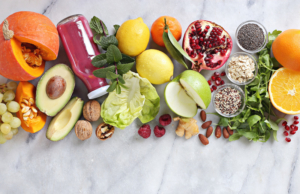
What Is Fiber?
Fiber is found in plant based foods such as fruits, vegetables, nuts, seeds, beans, and whole grains. It is considered bulk and passes through the body undigested which allows your digestive system to stay clean and healthy.
It also allows for easy bowel movements, gets rid of cholesterol, and flushes toxic carcinogens out of the body. Our microbiome in our gut only eat on plant fiber, this means that plant fiber is what feeds our bacteria in our gut. The more plant foods you eat the healthier you you will from the inside out.
How Eating Foods High In Fiber Can Change Your Health
Plant foods contain fiber but also contain lots of vitamins, minerals, and nutrients that allows our body to run smoothly and helps keep disease away. Even though fiber is undigested, while food is being moved through the digestive system the nutrients are being absorbed.
Think about this. One apple has over 10,000 phytonutrients. If you eat one apple a day all of those amazing nutrients are being absorbed as you eat them. So the more plant foods we consume the more vitamins, minerals, and nutrients are being absorbed by our body.
When we give our body plant foods it knows exactly what to do with these foods. The cool thing about eating all these different foods high in fiber is that we will start to see some amazing changes taking place.
My blood sugar went from dropping to 40 several times a day to me going almost five years without one single drop in blood sugar. Fiber is what helps us feel full and balances our blood sugar among many other benefits.
What Are Some Benefits Of Fiber
- Easier and better bowel movements
- Balanced blood sugars
- Lowers cholesterol
- Prevents or reverses heart disease
- Aids in healing diabetes
- Lower rates of obesity, stroke, high blood pressure
- Lowers rates of digestive diseases
- Helps with better skin
- Heals the gut
- Weight Loss
- If you are looking for more educational information please check out The Gut Health MD’s new book Fiber Fueled. It’s amazing with tons of recipes.
How Much Fiber Should Adults and Kids Eat Per Day
Adults should get closer to 40 grams of fiber per day. Kids ages 1-3 should get around 19 grams and kids 4-8 should get around 25 grams of fiber. If the majority of your meals are plant based then you are most likely eating 40 grams or higher of fiber a day. Pat yourself on the back because most Americans are far from this mainly because Americans are consuming the Standard American Diet (SAD) which consists of mainly processed foods, animal proteins, and dairy. Not a lot of variety in plant foods.
So what about kids? For some kids that don’t eat much variety to begin with, getting in an adequate amount of fiber can be difficult. Especially for picky eaters, they tend to not eat as many fruits and vegetables so their fiber intake is typically a little lower than a child that has more variety in their diet.
But don’t worry, below I’m gonna help you learn about some foods high in fiber and how to incorporate them into some family favorite recipes.
Foods High In Fiber For Babies
When you think of foods high in fiber I want you to think plant foods like fruits, veggies, nuts, seeds, beans, and whole grains. When we think about it like that it makes life a lot more simplified. If you have a baby and you are starting to feed them around 6 months then this is a perfect place to start.
Starting your baby with a variety of plant foods from the time they can eat is by far the best way to go. It’s often a longer process to transition to foods higher in fiber when your child is older and not used to eating many different plant foods. So the younger you start the better!
When first introducing baby foods introduce a variety of fruits and veggies. Try not to get stuck on the same flavors or same fruits and same veggies. Look for different flavors and different veggies and fruits as this will help to expand their palate and feed their good bacteria in their gut.
Extra bonus points for fiber if you make your own baby foods. It’s actually pretty simple and doesn’t have to be perfect. Basically you can place any fruit or veggie in the food processor with a little water or low sodium veggie broth and puree until you have a very smooth consistency.
Another hack I like to recommend is combining fruits and veggies together. It changes up the taste and combining foods allows for the nutrients in those foods to work together nicely inside in the body. You can mix banana with blueberries or kale with navy beans for example.
There is something called metabolic programming. This is when our body starts to crave the foods we feed it. When we give our babies plant foods from an early age this is the food they will crave. I can see this first hand with my own kids. I started early with my youngest and it’s amazing to see the cravings she has for fruits and veggies.
Tips For Feeding Babies Foods High In Fiber
- Start early (when introducing purees)
- Rotate Foods often so you aren’t giving them the same foods everyday
- Introduce new fruits, veggies, beans, and whole grains regularly (as appropriate for their chewing skills)
- Pick three new fruits and veggies to introduce each week (this will help with planning and prepping)
- Mix foods together making sure they are smooth and not lumpy in texture when first starting to eat
- Keep reintroducing foods even if baby seemed to not like at first (it can take multiple exposures before a baby wants to eat a food)
- Have fun and be patient (babies are just learning to eat so give them time and get messy!)
- No pressure! This is a must. Babies know exactly what they can safely handle. Please make mealtimes fun and pleasant. Watch for signs that your baby may not be enjoying mealtime and respect that. You may have to stop and come back to a meal. That’s okay mama!
Tips For Feeding Older Kids Foods High In Fiber
The earlier you start feeding kids plant foods the better. Sometimes we missed the boat and poof we feel like we have a very picky eater and are so far from them eating plant foods. Here are a few tips to help make mealtime pleasant and get kids eating more fiber.
Rotate fruits and veggies every three days. If you’ve served blueberries for three days then it’s time to introduce another fruit. This will help give kids more exposure and opportunities for them to eat more variety.
Try different whole grains. If your child likes white rice maybe you try brown and white rice mixed then all brown rice. Other options include quinoa, cous cous, pearled cous cous, millet, barley, and amaranth.
You may have to start with a boxed rice for more picky eaters and that’s okay, try different flavors. Then you can move to brown rice cooked with veggie broth.
Switch up the pastas. There are so many plant based pastas out there now. My kids love the Barilla Brand Chickpea Rotini noodles. You can try veggie noodles, chickpea noodles, lentil noodles, zucchini noodles, sweet potato noodles, black bean noodles, and mung bean noodles.
Try to serve a fruit and/or veggie at each meal. Once again, this gets them used to seeing these foods and allows more exposures.
Serve a small salad at dinner. It’s totally okay to deconstruct salad for more picky eaters. Deconstructing salads would mean you just separate out the toppings. Another presentation I prefer when making salads is to add fruit that my kids enjoy and add that to the salad.
I may add sliced apples or blueberries to the salad. I use pieces of fruit or veggies that are big enough for the kids to pick off if they want. You can use nuts that your child likes too. Placing toppings on a salad that your child prefers helps get them more engaged in the salad.
Get messy and be silly with food. Kids are often told “don’t play with your food” but actually playing with food is what helps kids learn to eat it. Do science experiments with food such as building towers or seeing what rolls down a slant faster.
Serve snacks that are higher in fiber such as popcorn, apples, berries, oats, homemade granola bars, energy bars
Make smoothies for breakfast, snacks, or after dinner treats.
Foods High In Fiber
- Fruits
- Veggies
- Nuts/Seeds
- Legumes/Beans
- Whole Grains (brown rice, quinoa, cous cous, amaranth, millet
- Broccoli or cauliflower rice
- Chickpea pasta, Lentil pasta, Black bean pasta, Mung bean pasta
- Chia Seeds
- Ground Flax Seeds
- Hemp Seeds
- Oatmeal
- Granola Bars
- Smoothies
Tips For Adding In Flax, Chia, and Hemp Seeds For Extra Fiber
These three little seeds are by far my most favorite foods high in fiber to add to recipes. I love to add them to muffins, pancakes, waffles, peanut butter toast, toast with jam or cinnamon & sugar toast. I also love to add them to omelettes or egg muffins. They go well in smoothies.
If you have a child that is funny about textures or even the way food looks then you may want to start very slowly and with ground flax. Then slowly add in a little more then hemp seeds then chia seeds. Out of all three of them, chia seeds are the most visible and change the consistency of certain foods.
I started out adding ground flax to muffins and pancakes. Now my kids will eat all three in any type of food. My kids love these lemon poppyseed muffins for breakfast. Instead of the poppy seeds sometimes I’ll add chia seeds. Perfect!
Starting Slow and Steady Wins The Race
Just start slow and be consistent. This is how you make small changes that add up to big changes over time. If your body is not used to eating a lot of fiber then starting slow will help your body start to adjust to more fiber and help with detox symptoms as you start to eat more plant foods.
Tips for starting slow include:
Pick one new fruit or veggie at the grocery store each week to try
Have your kids pick out a new fruit or veggie from the grocery store to try for the week
Cook a different type of whole grain than what you normally cook
Pick three new plant foods to incorporate into your weekly meal plan
Have a salad for lunch with as many colors as possible in it
Prep breakfast items so you have them on hand for the week. Oatmeal, chia pudding, overnight oats, whole grain pancakes and waffle are great options for all ages.
When cooking dinner, think about making real whole foods. I love to serve a few different fruits on a plate in the middle of the table so everyone can grab what they want.
Keep fruit and veggies on hand so they are easy and accessible to grab on the go
Think about serving more beans as a side. I feel like these are often forgotten about but they have wonderful benefits and a great source of protein and fiber
I hope this post helps you start to add more fiber into your diet. If you are interested in learning exactly how to eat more real, whole foods and want help for your whole family please check out my four week FUEL program.
This blog contains affiliate links. There is no cost to you to use the links.
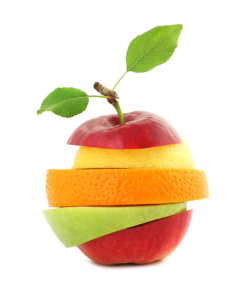

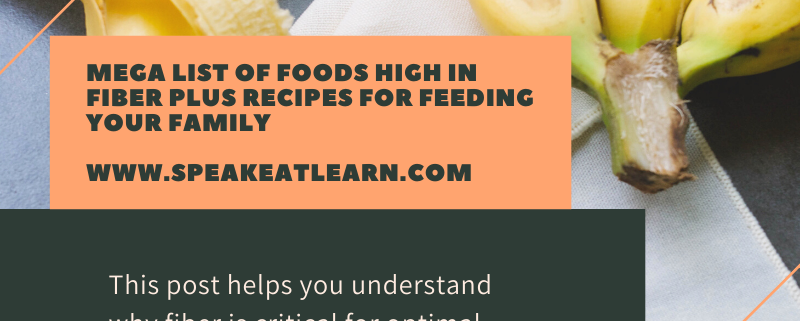

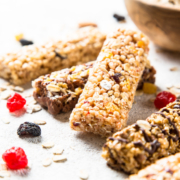
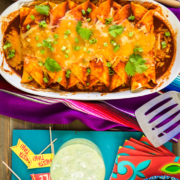







Leave a Reply
Want to join the discussion?Feel free to contribute!